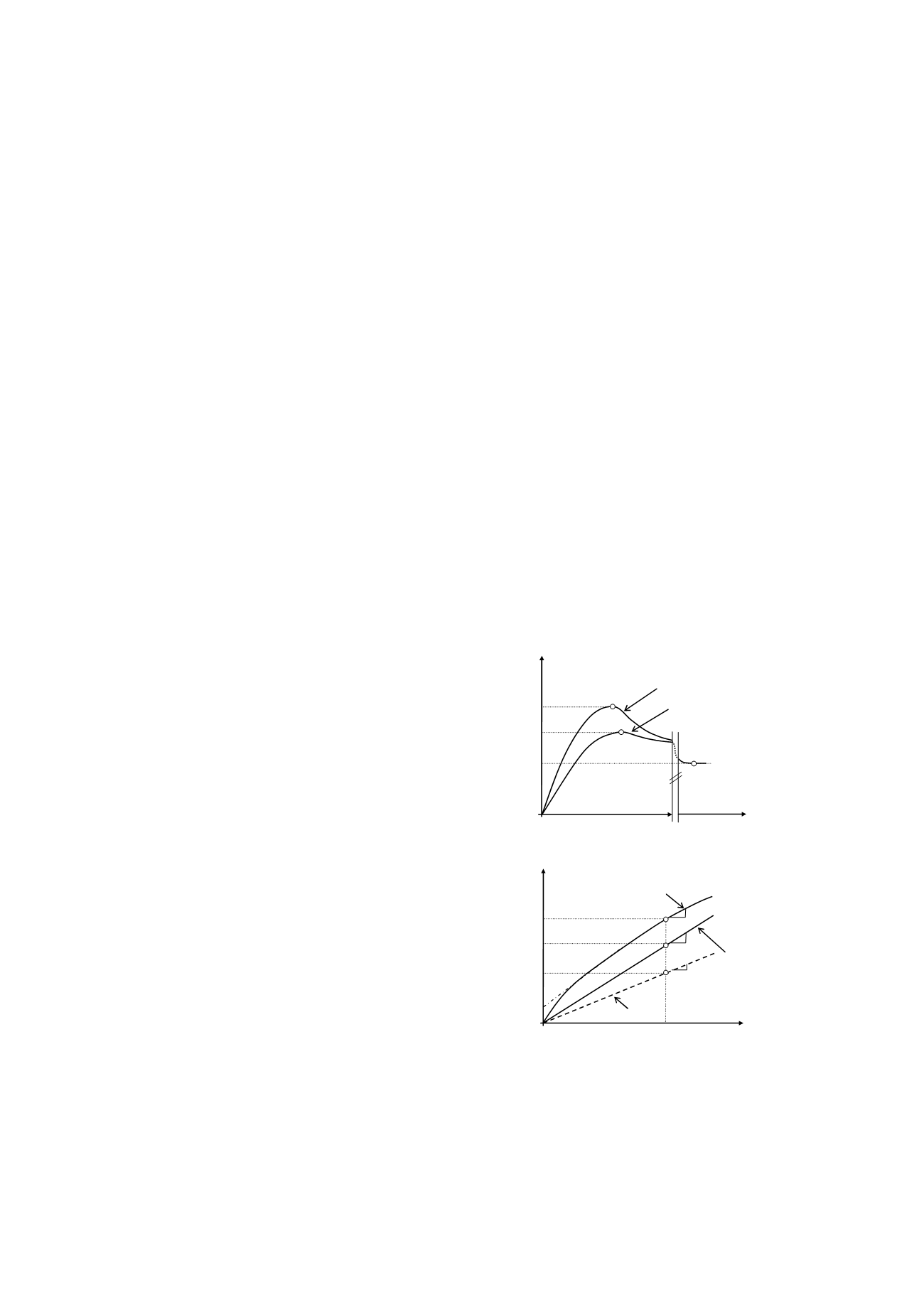
423
Correlation between drained shear strength and plasticity index of undisturbed
overconsolidated clays
Corrélation entre la résistance au cisaillement des sols drainés et l'indice de plasticité des argiles
surconsolidés non perturbées
Sorensen K.K.
The Danish Geotechnical Institute (GEO) / Department of Engineering, Aarhus University
Okkels N.
The Danish Geotechnical Institute (GEO)
ABSTRACT: A number of triaxial compression tests have been performed by The Danish Geotechnical Institute over the past
decades on undisturbed overconsolidated Danish clays; ranging from clay till of low plasticity to extremely high plasticity marine
Tertiary clays. The test results confirm that the drained peak angle of shearing resistance can be related to the plasticity index, though
a large scatter is generally seen. Based on the results and a review of published data a conservative relationship between drained peak
angle of shearing resistance and plasticity index for undisturbed overconsolidated clays is proposed. The proposed relationship and
the interrelation to the effective cohesion are discussed.
RÉSUMÉ: De nombreux essais de compression triaxiale ont été effectués par l’Institut danois de géotechnique au cours des dernières
décennies sur les argiles danoises surconsolidées non perturbées, allant des argiles morainiques ayant une plasticité faible à des argiles
marines tertiaires ayant une plasticité extrêmement élevée. Les résultats des essais confirment que l’angle de résistance maximale au
cisaillement des sols drainés peut être lié à l’indice de plasticité si une forte dispersion est généralement observée. Sur la base de ces
résultats et à partir d’un ensemble de données déjà publiées, une relation conservatrice entre l’angle de résistance maximale au
cisaillement des sols drainés et l’indice de plasticité pour les argiles surconsolidées non perturbées est proposée. La relation proposée
et les liens à une cohésion effective sont discutés.
KEYWORDS: Plasticity index, Drained shear strength, Laboratory testing, Overconsolidated clay
1 INTRODUCTION
Empirical correlations are widely used in geotechnical
engineering practice as a tool to estimate the engineering
properties of soils. Useful correlations exist between the index
properties obtained from simple routine testing and the strength
and deformations properties of cohesive soils among others. For
practical purposes the results of routine index tests and
correlations can be used as a first approximation of the soil
parameters for use in preliminary design of geotechnical
structures, and later as a mean to validate the results of
laboratory tests. Results from several index tests obtained for a
given site can be used to assess the variation in the properties of
the soil mass.
This study is aiming to provide a conservative correlation
between the effective peak angle of shearing resistance and
plasticity index I
P
for natural undisturbed overconsolidated
Danish clays based on the results from a large database of
triaxial compression tests performed by The Danish
Geotechnical Institute (GEO) over the past decades.
1.1
Stress-strain behavior and effective strength of
overconsolidated clays
In contrast to normally consolidated (NC) clays highly
overconsolidated (OC) natural clays typically show a distinct
strain softening behavior in drained triaxial compression, which
can be related to the breakdown of interparticle bonding and the
dilatant behavior of the compact clay structure (Burland 1990).
With further shearing in the post peak region OC clays (as well
as NC clays) may experience an additional reduction in strength
due to the alignment of the platy clay particles on the failure
plane (residual state). The stress-strain behavior of OC clays
compared to NC clays is illustrated in Figure 1a.
Figure 1. Peak and residual shear strength for normally consolidated and
overconsolidated soils (a) Typical stress-strain curves (b) Failure
envelopes showing the associated angle of shearing resistance,
φ
'
Stiff fissured overconsolidated clays may fail along
preexisting fissures in which case the strength is governed by
the fissure strength. Skempton (1957) found the fissure strength
to correspond to the fully softened strength i.e. shear strength of
the reconstituted normally consolidated soil, which is less than
Shear stress
τ
Strain
Overconsolidated (OC) soil
Normally consolidated (NC)
soil
σ
'
n
constant
A
B
C
At large strains
(a)
Normal effective stress
σ
'
n
Shear stress
τ
Peak strength
envelope OC soil
A
B
C
Peak strength
envelope NC soil
Residual strength envelope
OC and NC soils
φ
'
oc
φ
'
nc
φ
'
res
(b)
c'
oc
0


